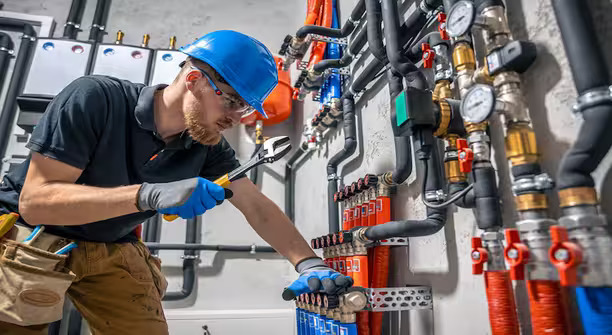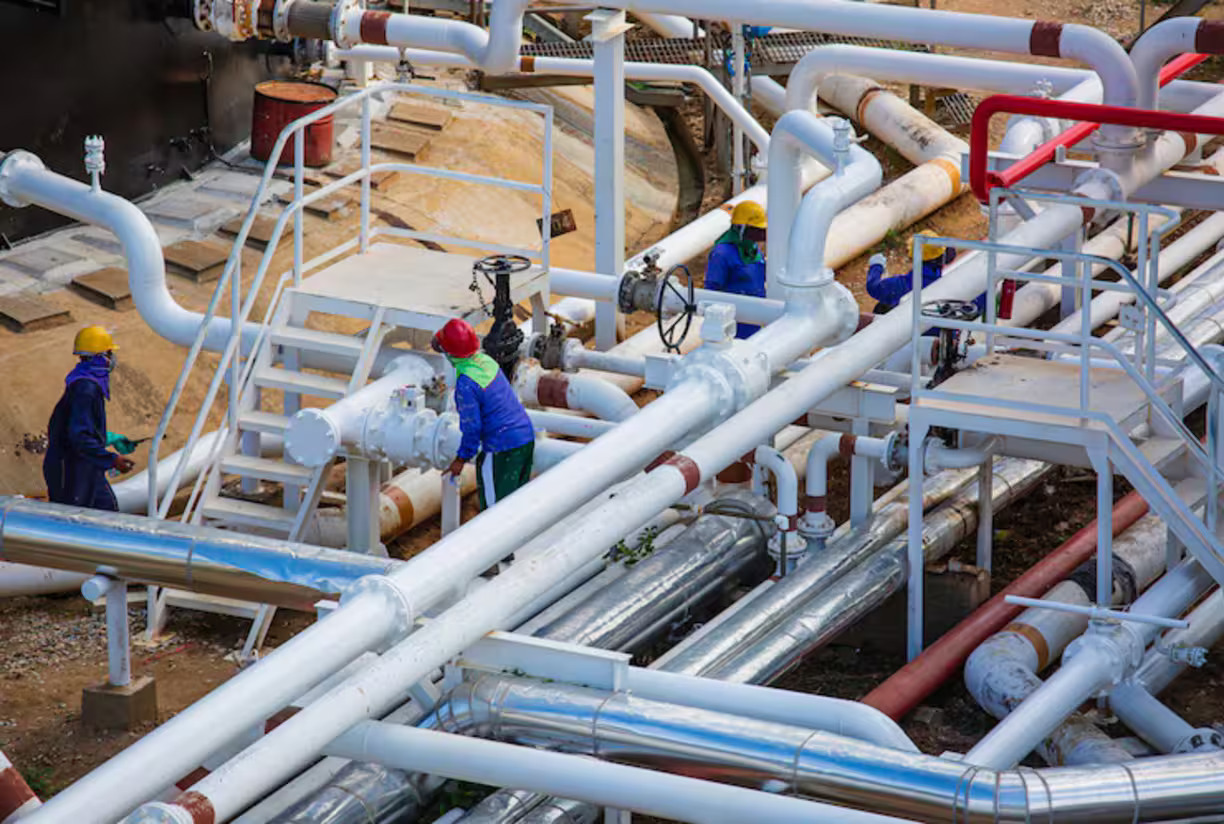What is Hygienic Plumbing Installation? For Which Sectors is it Important?
- Blog
- What is Hygienic Plumbing Installation? For Which Sectors is it Important?
What is Hygienic Plumbing Installation? For Which Sectors is it Important?
Table of Contents
- What is Hygienic Piping Installation?
- What Are the Key Features of Hygienic Piping?
- Which Industries Use Hygienic Piping?
- Materials Used in Hygienic Piping Installation
- What Are the Advantages of Hygienic Piping?
- How is Hygienic Piping Installation Performed?
- Maintenance and Cleaning of Hygienic Piping
- Standards and Certifications for Hygienic Piping
- Key Considerations in Hygienic Piping Installation
- Cost Factors of Hygienic Piping
What is Hygienic Piping Installation?
Hygienic piping installation refers to the setup of piping systems designed to prevent contamination and microbial growth, particularly in environments requiring high cleanliness and safety standards. These systems ensure the sterile transport of liquids, gases, or other substances. Unlike traditional piping systems, hygienic piping stands out with its smooth surfaces and easy-to-clean properties, making it a preferred choice for sensitive production processes.
Hygienic piping is typically made from durable, corrosion-resistant materials like stainless steel. These systems minimize the risk of contamination, ensuring product safety. For instance, in a food production facility, bacterial growth during the transfer of liquid food through pipes can directly impact product quality. Thus, hygienic piping installation enhances operational efficiency while safeguarding consumer health.
What Are the Key Features of Hygienic Piping?
The most prominent feature of hygienic piping systems is their compliance with high cleanliness standards. The pipes, fittings, and valves used in these systems have smooth surfaces, designed to prevent microbial buildup. Additionally, these systems are easily disassembled and cleaned, enabling fast and effective maintenance processes.
Another critical feature is corrosion resistance. Hygienic piping often encounters chemicals or high temperatures. Therefore, high-quality materials are used to ensure durability. The inner surfaces of the pipes are designed to facilitate fluid flow, minimizing product loss. These characteristics make hygienic piping both economically and operationally advantageous.
Which Industries Use Hygienic Piping?
Hygienic piping systems are widely used in industries where cleanliness and safety are critical. One of the primary sectors is the food and beverage industry. In the production of products like milk, juice, beer, or chocolate, the hygienic transfer of liquids is essential. Any contamination can degrade product quality and jeopardize consumer health.
Another key sector is the pharmaceutical industry. The transport of raw materials and final products in drug manufacturing requires a sterile environment. Hygienic piping eliminates the risk of contamination in these processes. Additionally, industries such as chemicals, biotechnology, and cosmetics frequently rely on hygienic piping. In these sectors, product purity and safety depend directly on the quality of the piping system.

Materials Used in Hygienic Piping Installation
Materials used in hygienic piping installation are carefully selected to ensure the system is long-lasting and safe. The most common material is stainless steel, particularly grades 304 and 316L, valued for their corrosion resistance and ease of cleaning. These materials withstand high temperatures and chemical exposure.
Fittings and gaskets are also vital components of hygienic piping. These are typically designed to ensure leak-proof performance and maintain sterility. Food-grade gaskets, such as those made from silicone or EPDM, prevent leaks and keep the system hygienic. Valves and fittings, with their smooth surfaces, are designed for easy cleaning and can be disassembled as needed.
What Are the Advantages of Hygienic Piping?
Hygienic piping systems offer benefits that provide both economic and operational advantages for businesses. Primarily, they reduce the risk of contamination, enhancing product safety. This is crucial for maintaining brand reputation, especially in the food and pharmaceutical sectors. Additionally, their easy-to-clean design saves time during maintenance.
Another advantage is durability. Materials like stainless steel remain intact for years without deformation, lowering maintenance costs. Furthermore, hygienic piping systems improve energy efficiency, as their smooth inner surfaces facilitate fluid flow, reducing the energy consumption of pumps.
How is Hygienic Piping Installation Performed?
Hygienic piping installation is a specialized process. The first step is project planning, where the needs of the installation area are analyzed, and appropriate pipe diameters, fittings, and materials are selected. The installation is then carried out in a sterile environment, ensuring all connection points are leak-proof.
Installation typically involves welding techniques or specialized fittings. If welding is required, precise methods like orbital welding are used to maintain smooth surfaces. Once completed, the system is tested to check for leaks or defects, ensuring long-term performance.
Maintenance and Cleaning of Hygienic Piping
Regular maintenance of hygienic piping is essential to preserve its efficiency and hygiene. Cleaning processes are often performed using CIP (Clean-in-Place) systems, which enable automated cleaning without dismantling the pipes, saving time. Food-grade chemicals or hot water are typically used during cleaning.
During maintenance, the condition of gaskets and the integrity of connection points are inspected. The inner surfaces of the pipes are regularly checked for buildup. Periodic inspections ensure the system’s longevity and prevent production interruptions. Proper maintenance enhances performance and reduces operational costs.
Standards and Certifications for Hygienic Piping
Hygienic piping systems must comply with international quality standards. For example, piping used in food and pharmaceutical industries is typically subject to standards set by the FDA (Food and Drug Administration) or EHEDG (European Hygienic Engineering and Design Group). These standards ensure the systems are safe and hygienic.
Materials used in hygienic piping must also carry certification documents. For instance, stainless steel pipes with 3A or ASME BPE certifications enhance system reliability. Compliance with standards simplifies audits for businesses and strengthens consumer trust.
Key Considerations in Hygienic Piping Installation
Several critical factors must be considered during hygienic piping installation. First, proper material selection is essential. Pipes and fittings must meet industry standards. Additionally, maintaining sterile conditions during installation is vital to preserve system hygiene.
Another key point is that the installation should be performed by a specialized team. Inexperienced installation can lead to leaks or hygiene issues. During the design phase, planning must ensure unobstructed fluid flow and avoid dead zones (areas where liquids could accumulate). These details directly impact the system’s long-term performance.
Cost Factors of Hygienic Piping
The cost of hygienic piping installation depends on several factors. The quality of materials used is a primary driver. High-quality materials like stainless steel or specialized gaskets may be more expensive but offer long-term savings. The project size and complexity of the piping system also influence costs.
The expertise of the installation team and the technological equipment used also play a role in pricing. For example, specialized techniques like orbital welding may increase costs but provide precision. Additionally, the system’s maintenance and cleaning requirements affect long-term costs. Proper planning and quality materials optimize the total cost, delivering economic benefits to businesses.


